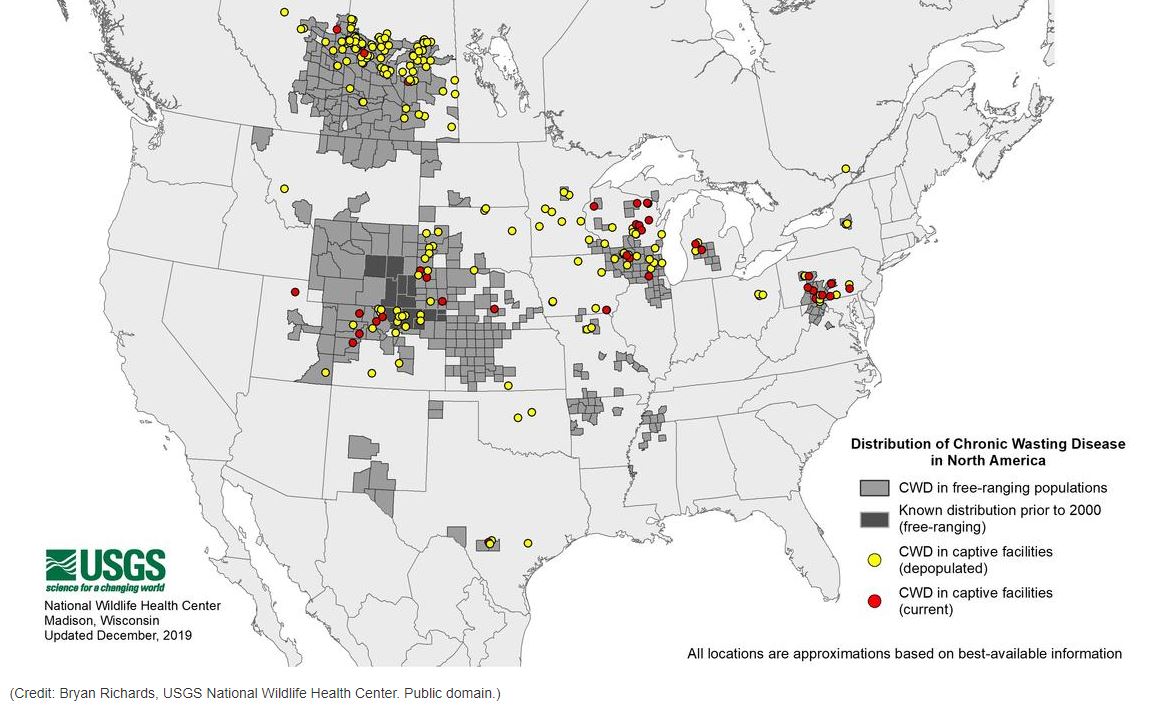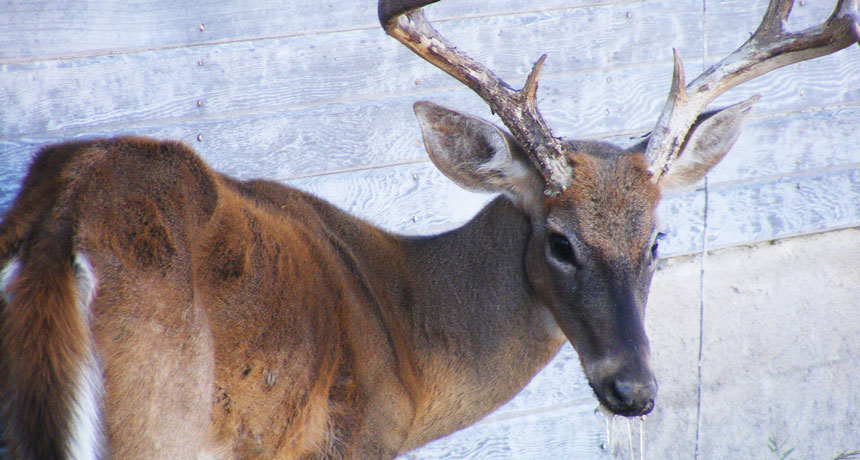Don’t Bring CWD to LA
Louisiana wildlife officials recently slammed the door on hunters bringing back deer carcasses from other states. The move is in response to Chronic Wasting Disease (CWD) since the deer disease has been found in the free-ranging white-tailed deer herds in neighboring Arkansas and Texas. For decades now, numerous Louisiana hunters have made the annual pilgrimage west each fall, but getting deer from Texas and elsewhere back to LA has just gotten more difficult.
The Louisiana Department of Wildlife and Fisheries announced late last month that the cervid-carcass import ban approved last year goes into effect. That means hunters who travel out of state to target white-tailed deer, mule deer, elk, moose, caribou, fallow deer, axis deer, sika deer, red deer and reindeer may not bring many parts of those animals back into the state of Louisiana, which to-date has remained free of CWD.

Louisiana’s Cervid Import Regulation
Source: The regulation reads in part: No person shall import, transport or possess any cervid carcass or part of a cervid carcass originating outside of Louisiana, except: for meat that is cut and wrapped; meat that has been boned out; quarters or other portions of meat with no part of the spinal column or head attached, antlers, clean skull plates with antlers, cleaned skulls without tissue attached, capes, tanned hides, finished taxidermy mounts and cleaned cervid teeth. Any and all bones shall be disposed of in a manner where its final destination is at an approved landfill or equivalent. Said rule shall be effective March 1, 2017.
The ban defines a cervid as animals of the family Cervidae, including but not limited to white-tailed deer, mule deer, elk, moose, caribou, fallow deer, axis deer, sika deer, red deer and reindeer.
This ban is strictly for the purpose of reducing the likelihood that CWD will enter Louisiana through carcass importation. Approved parts and meat from other states must contain a possession tag with the hunter’s name, out-of-state license number (if required), address, species, date and location (county and state) of harvest. Each state has different possession requirements for game once processed.
Goal of Carcass Ban
The new regulation is deigned to maintain the “Sportman’s Paradise” that Louisiana offers by reducing the likelihood of CWD moving into the state. For those that have been under a rock for the past 10 years, CWD is a neurodegenerative disease that is 100-percent fatal to cervids that contract it.
The long-term impacts of CWD on deer herds is unknown, although Colorado, the state where CWD was first discovered (1967), appears to have decreased cervid populations. Whether these declines are strictly CWD-related, however, is unknown. Over the short-run, CWD does appear to change the demographics of the local deer herds where the disease is found, resulting in a younger average age because deer do not live as long.

Managing CWD Positive Deer Herds
CWD poses a risk to deer and deer hunting simply because it introduces another variable in the deer management/harvest equation. It’s still basically an unknown, a factor that will have some amount of impact on an annual basis once it works its way into a localized herd. After that, it begins to spread because there is no way to get rid of it.
A carcass ban on harvested cervids appears to be an effective way to stop the fast-tracking of CWD to new, uninfected areas. Of course, CWD will continue to spread naturally throughout North America. Carcass bans make it tough on hunters when it comes to transporting harvested deer home, but we also understand that it is helping to protect the natural resources that we enjoy. I hope that CWD is something that I never have to factor in to the deer management equation, but I suspect it’s just a matter of time.

This makes hunters lawbreakers in other states, because you have to leave the head skinned or unskilled attached to transport.
Think I would take my chances with LDWF rather than the other states I hunt, where they require the head to accompany the meat.
Frank, it ends up being a toss up on which state’s a law a hunter is going to break. In the case of CWD it would make sense to have a standardized way of dealing with this issue between states.